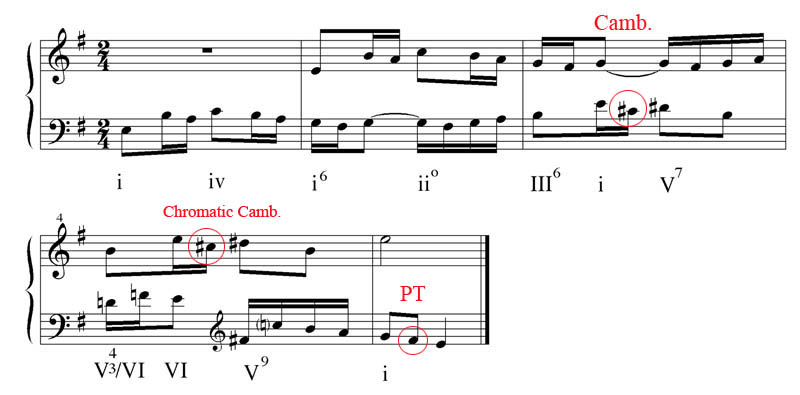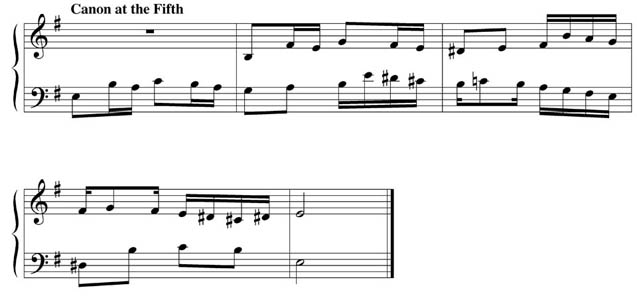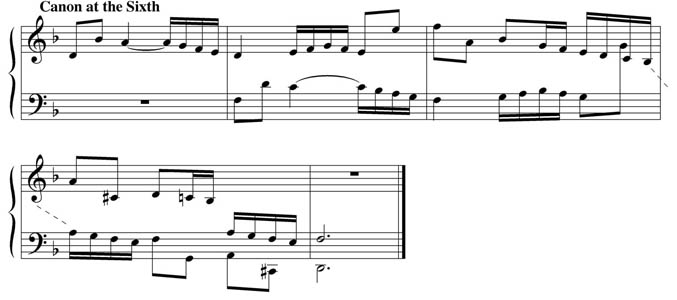A. Simple two-part canon at the octave
1. The first step involves creating a single melodic line that is both brief and has a distinct musical profile. The later can be accomplished through the careful placement of a large leap and a single climax note within the course of the motivic design. This voice is known as the dux, which is Latin for 'leader'. The dux will establish what the following voice, or comes (Latin for 'companion'), will imitate. Note that even when composing for a solo voice, the correct use of non-harmonic tones is pertinent in understanding what pitches will support a triad within a progression. As well, establishing a clear harmonic rhythm from the outset is useful once the second voice enters. In the following example, it is clear that the e minor tonality is established in the dux through a melody that outlines the progression of i-iv, wherein the harmonic rhythm is quarter-quarter. As well, we have provided a strong rhythmic impulse through the alternation of eighths and paired sixteenths.
2. Next, the composer simply copies the dux material in the following bar an octave higher: this is the entrance of the comes.

3. Now the composer can introduce new material in the dux which complements the comes part above. We must be careful to employ consonances (primarily 6ths and 3rds) to generate triadic implications between the two voices. Equally important is the rhythmic interplay and continuity: as the sixteenth-note motive has been established in bar one, this impulse should be maintained to a fair degree in the subsequent development of the piece (with the possible exception of cadence regions). As well, leaps in one voice can be balanced with more scale-based material in the other. In all, when composing new material in the dux, it must maintain its own individual melodic contour. To test this, play the new line alone and judge whether or not it still sounds like an independent melody. Another way to test the balance between the melodic contours of the voices is locating all regions of similar, parallel, contrary, and oblique motion between the voices - none should dominate in the course of a phrase and none should be entirely excluded either.
As in step two, we now copy this accompanying material from the dux to the comes in the next bar - this pattern will be maintained until the arrival of the cadence.

4. Finally, at the cadence point, the composer can chose to make some alterations within the comes - the composer should support the tonal function of the end of the phrase rather than necessarily feel compelled to copy the dux verbatim. Note that at all times the composer must be aware of the harmonic implications resulting from the interplay between the parts so that the progression proceeds logically.
mp3 download (flute and marimba arrangement)







